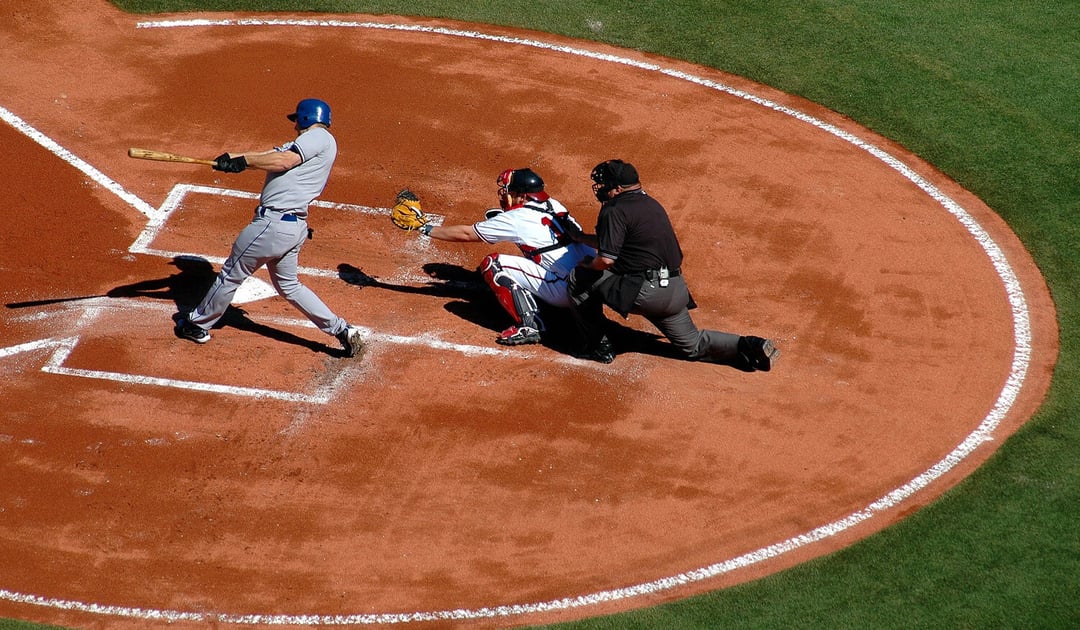
With opening day a few weeks past, but before the designation "boys of summer" becomes official this year, it's worth noting that baseball has often been called a metaphor for life. And since life in this corner of the world revolves around shipping and logistics, it's worth considering whether baseball can also serve as a metaphor for freight. In other words, if freight is life and baseball is life, then it seems pretty clear that freight and baseball intersect. With all that said, rather than making this a philosophical exercise, let's look at some practical comparisons between baseball and freight. You may be surprised at how similar they are.
Point A to Point B
Baseball and freight are both heavily centered around point to point actions. The simplistic definition of logistics after all is the actions required to get products from point A to point B - ideally at the lowest cost with the best service. And those products being transported are known as freight. Just as point A and point B vary in freight, with plenty of freight lanes (or origin/destination pairings), so too can those points vary in baseball.
A simple point A to point B on the field is the pitcher delivering the ball (the ball being the freight in this case) to the plate. Even then, point B may be the catcher's mitt or the bat of the hitter. The goal for the pitcher of course is to record outs efficiently, whether those are achieved by throwing strikes avoiding the bat, or having the hitter redirect the ball to a point C that happens to be a fielder's waiting glove.
From an offensive perspective, the hitter in the batter's box is point A, while the ideal point B may be over the outfield fence or simply to a safe spot on the field. Does that make the bat logistics? At any rate, there is another perspective that relates to the industry as well.
The Baseball Diamond and Circular Supply Chain
The comparison between the baseball diamond - or the basepath if you prefer - and a supply chain is more visual in nature than anything else. After all, a supply chain refers to the entire network behind the process of converting raw goods to the end salable product - and getting it to the customer. The baseball diamond is a bit less complex than that, but it does share a shape and the simplistic points that can draw to mind a typical supply chain illustration - especially one of the circular variety.
.jpg?width=1500&height=875&name=Baseball%20Diamond%20Supply%20Chain%20(1).jpg)
Think of the pitcher as the raw material producer. The hitter then is the manufacturer that turns the material into the product. First base is where the product moves next - let's say a warehouse in this case. Second base can be the distributor. Then third base is the retailer. And finally, home plate aptly compares to the end consumer (who is often consuming a product at home). To complete the circular supply chain comparison, this cycle simply restarts after the hitter touches home - sometimes, reusing the same ball.
Multiple Modes
We all know freight moves via multiple modes, whether it be steamship, truck, intermodal or air - most of the time, some combination of those. On the baseball field, the ball can do the same. Air is probably the most common, as there are plenty of throws - from pitcher to catcher and back, a fielder to another fielder and a hitter to a fielder or the stands. But there is ground transportation as well, when a fielder carries a ball in his glove to make a tag or tag a base or when a hitter hits a grounder. There can even be a water component in some ballparks.
Analytics
Both the freight industry and baseball as a sport have been heavily impacted by analytics, with businesses and teams increasingly using a data-driven approach to optimize operations and maximize success. In freight, a TMS can hold an endless amount of data with the references required to perform the deep dive analytics. Companies can use both simple and advanced analytics complete with business (and market) intelligence to turn their supply chain from a cost center to a strategic advantage. That can involve route optimization, load consolidation, contract and spot rate savings, streamlined operations and more.
In baseball, teams use the vast amount of statistics and metrics available to better position defenders, develop or focus on particular pitches, improve hitting approaches and find undervalued players. The evolution of technology in both freight and baseball has made this data more plentiful and readily available than ever. In both as well, there has been some pushback on a feeling that some are operating purely by the numbers and forgetting the human element. We have just such a discussion on our podcast with Intermodal In-Depth's Larry Gross (even incorporating a bit of baseball).
There are other similarities between freight and baseball that we didn't get to in detail, like the travel aspect of a team, the seasonality, effects of weather or something else. But whether you're a freight professional who's a fan of the national pastime or no, it's hard to deny there's some crossover.
If you're interested in reading more from us, subscribe to the blog and check out our Freight Guides. Looking for freight and logistics solutions? Fill out our Request a Quote form and we'll get back to you to discuss your company's unique needs to help you hit your freight operations out of the park!
Get Updates
Featured Articles
Categories
- Freight & Shipping Costs (52)
- Freight Broker (58)
- Freight Forwarder (2)
- Intermodal Transportation (180)
- International & Cross Border Logistics (43)
- Logistics & Supply Chain (413)
- Logistics Service Provider (76)
- LTL (39)
- Managed TMS (49)
- News (38)
- Supply Chain Sustainability (12)
- Transportation Management System (37)
- Truckload (120)
- Warehousing & Distribution (49)



